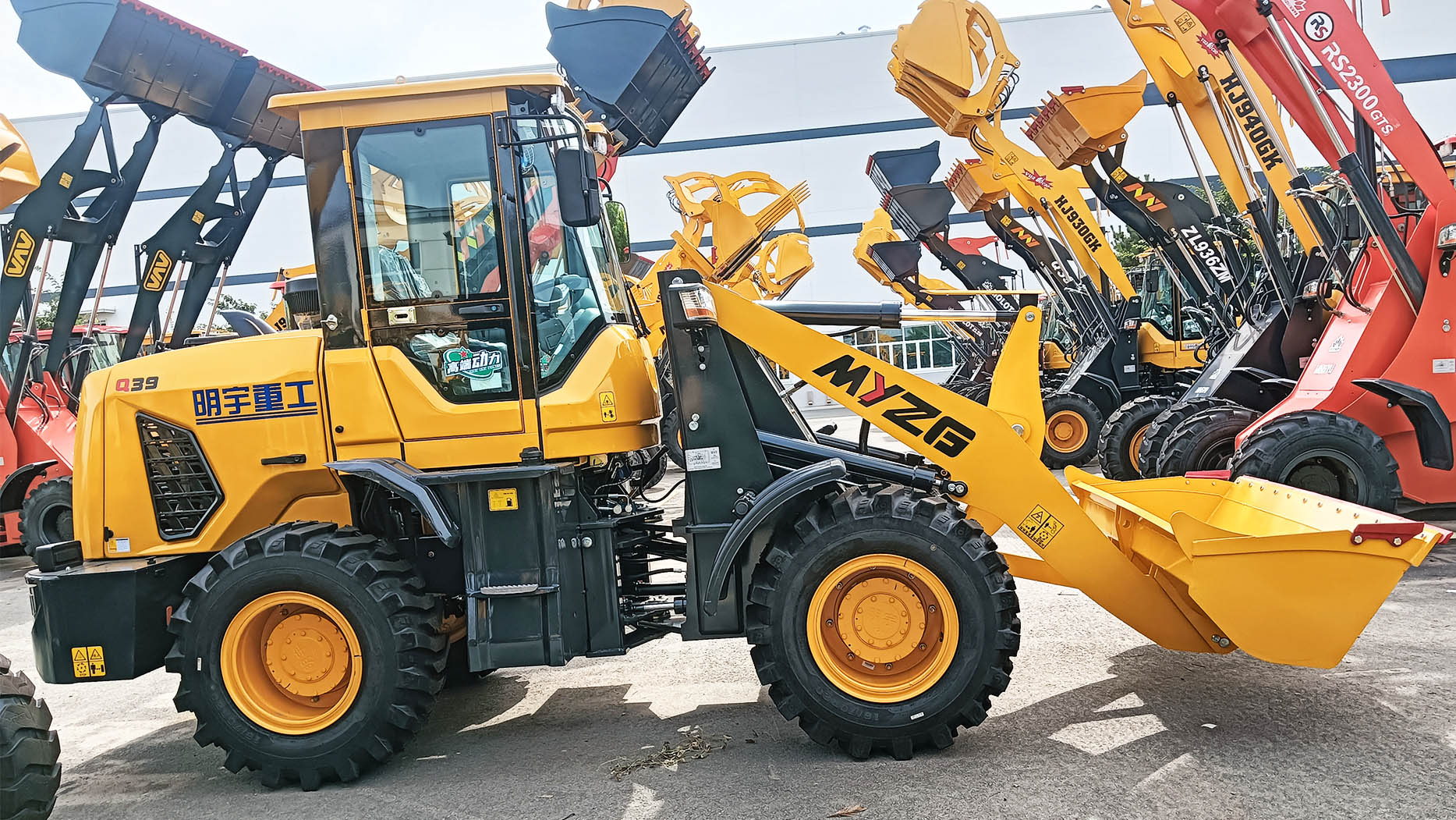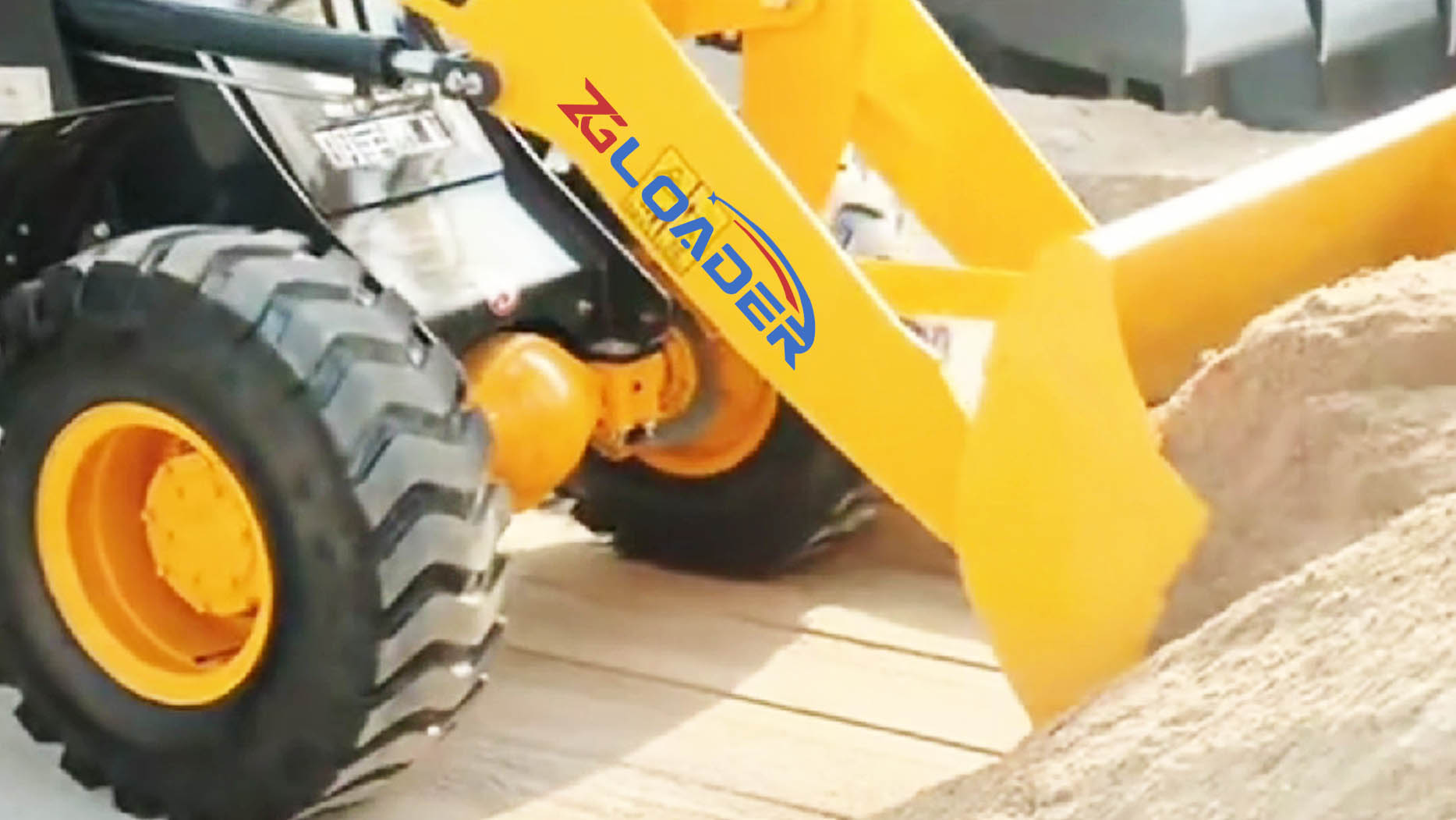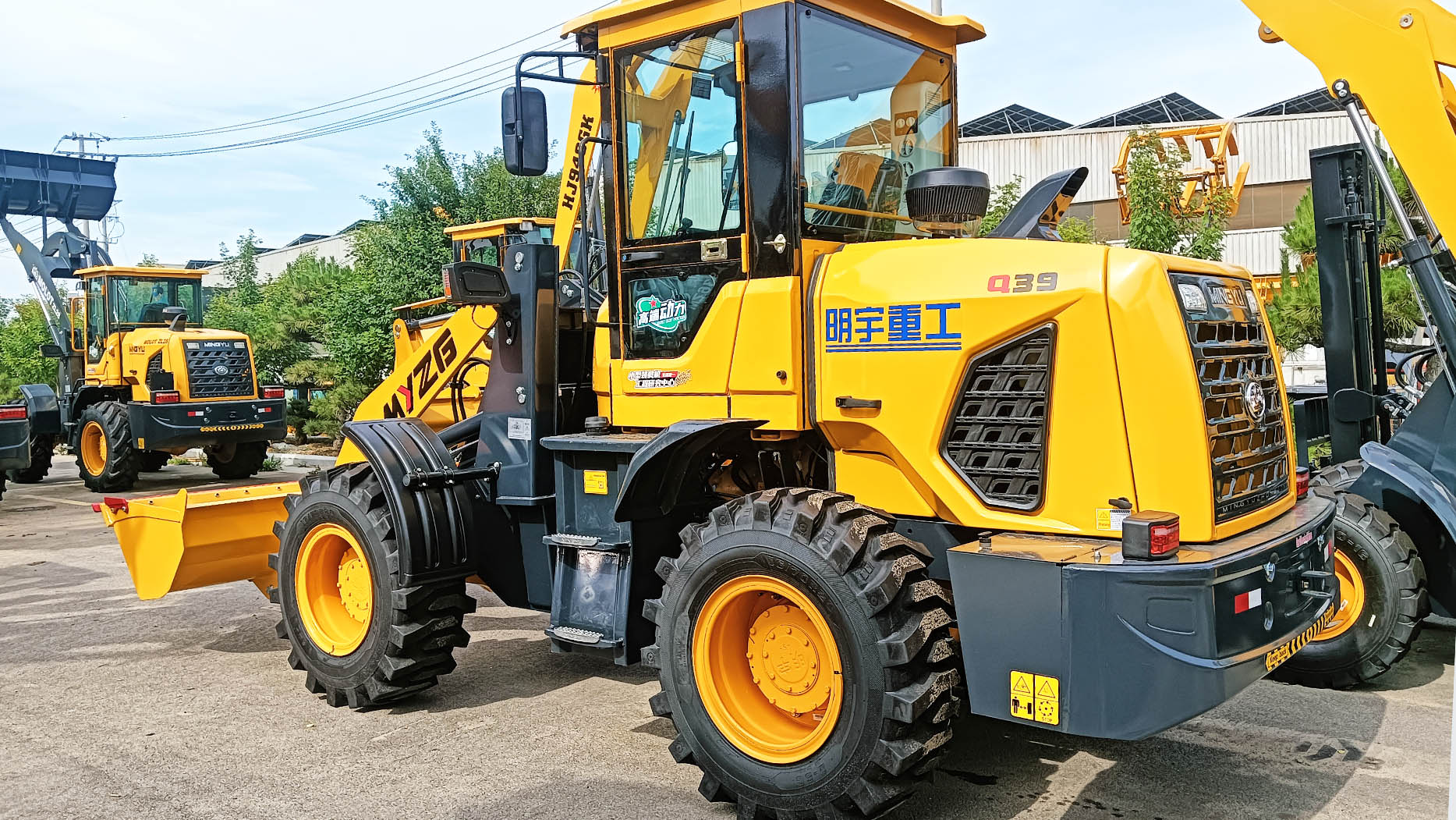For many businesses in construction, landscaping, agriculture, and material handling, the 3-ton wheel loader represents a sweet spot in heavy equipment. It offers a powerful combination of maneuverability, lifting capacity, and versatility, making it ideal for a wide range of tasks without the significant footprint or cost of larger machines. But for those looking to acquire this workhorse, a crucial question arises: What is the price of a new 3-ton wheel loader?
The cost of a new 3-ton wheel loader isn't a fixed figure; it's a dynamic range influenced by numerous factors. Generally, you can expect to pay anywhere from $35,000 to over $90,000 for a brand-new unit, with highly specialized models potentially exceeding this. This wide price spectrum reflects variations in manufacturing, engine technology, features, and brand reputation. Understanding these variables is key to making an informed purchasing decision that aligns with both operational needs and budgetary considerations.
Key Factors Influencing the Price of a New 3-Ton Wheel Loader
Several critical elements contribute to the final price tag of a new 3-ton wheel loader. Prospective buyers must carefully consider these aspects to ensure they acquire a machine that offers the best value for their specific requirements.
1. Brand and Manufacturer Reputation:
This is one of the most significant price drivers. Manufacturers fall into different tiers, influencing cost.
Premium Brands (e.g., Caterpillar, Komatsu, John Deere, Volvo, Case, Liebherr): These are global leaders known for their cutting-edge technology, superior build quality, advanced features, extensive dealer networks, and strong resale values. A new 3-ton wheel loader from these brands will typically be at the higher end of the price spectrum, ranging from $70,000 to over $90,000. Their reputation often comes with lower long-term maintenance issues and excellent support.
Established Mid-Tier Brands (e.g.,MYZG / Hyundai, Doosan, SANY, LiuGong, XCMG): These manufacturers offer a strong balance of quality, features, and price. Their 3-ton wheel loaders might range from $50,000 to $75,000. They provide reliable performance and are increasingly incorporating advanced technologies, often with robust dealer support.
Value-Oriented and Emerging Brands (e.g., ZGLOADER, MYZG): Brands like ZGLOADER and MYZG (Mingyu Forklift and Construction Equipment) have gained significant traction by offering competitively priced wheel loaders. A new 3-ton wheel loader from ZGLOADER or MYZG typically falls into the $35,000 to $55,000 range. While historically perceived as budget options, these manufacturers have made substantial improvements in quality, durability, and feature sets in recent years. They provide an accessible entry point for businesses that need reliable performance without the premium brand price tag. Their increasing presence also means better parts availability and service support in many regions.

Engine Type and Emissions Standards:
The type of engine and its compliance with environmental regulations significantly impact cost.
Diesel (Wheel Loader Diesel): The vast majority of 3-ton wheel loaders are powered by diesel engines due to their superior torque, power, and fuel efficiency for heavy-duty applications.
Emissions Compliance: Engines that comply with the latest emissions standards (e.g., EPA Tier 4 Final in North America, EU Stage V in Europe) are more expensive due to the complex aftertreatment systems (such as Diesel Particulate Filters (DPF) and Selective Catalytic Reduction (SCR) requiring Diesel Exhaust Fluid (DEF)). These technologies add to the manufacturing cost and require specific maintenance. Older, non-compliant models (if still available new in some markets) might be cheaper but are restricted in where they can operate.
3. Transmission Type:
The transmission system affects both performance and price.
Hydrostatic Transmissions: Often found in more advanced models, these offer smooth, precise control, excellent fuel efficiency, and can be more intuitive for operators, especially in repetitive, short-cycle applications. They tend to be more expensive upfront.
Power Shift Transmissions: More traditional and robust, good for heavy digging and long-distance hauling. Generally less expensive than hydrostatic.
Continuously Variable Transmissions (CVT): Some higher-end models might feature CVTs, which combine the benefits of both, optimizing power and fuel efficiency.
4. Hydraulic System:
The sophistication of the hydraulic system directly influences the loader's lifting capacity, breakout force, and ability to power attachments.
Standard Hydraulics: Sufficient for basic loading and digging.
High-Flow Auxiliary Hydraulics: Essential for powering demanding attachments like mulchers, cold planers, or large brooms. Adding high-flow capabilities increases the complexity and cost of the hydraulic system.
5. Lift Path (Radial vs. Vertical):
While more common in skid steers, some wheel loaders, especially compact or mini wheel loader variants, might offer distinctions in their lift path. Most mid-sized wheel loaders have a Z-bar linkage, optimized for strong breakout force and quick dumping.
6. Cab Features and Operator Comfort:
The level of sophistication in the operator's cabin greatly affects price.
Basic Cab: Simple controls, minimal climate control.
Enclosed Cab with HVAC: Essential for operator comfort in diverse climates, providing heating, ventilation, and air conditioning. This is a significant upgrade that adds to the cost.
Ergonomics and Controls: Electro-hydraulic (EH) joystick controls offer more precision and customization than traditional mechanical levers and typically cost more. Adjustable seating, sound suppression, and visibility features (e.g., rearview cameras, 360-degree vision) also influence price.
 7. Tires and Axles:
7. Tires and Axles:
The type of tires (pneumatic, foam-filled, or solid) and axle configuration impact performance on different terrains and overall cost. Heavy-duty tires designed for harsh environments will be more expensive.
8. Attachments and Accessories:
The listed price of a 3-ton wheel loader typically includes a standard general-purpose bucket. However, the true versatility of a wheel loader comes from its wide array of attachments, which are almost always sold separately and can add thousands to tens of thousands of dollars to the overall investment.
Common Attachments (price per attachment):
Pallet Forks: $1,500 - $4,000
Light Material Buckets (larger volume for snow, mulch): $2,000 - $6,000
Grapples (for logs, brush, irregular materials): $3,000 - $10,000
Snow Plows/Blowers: $4,000 - $12,000+
Brooms/Sweepers: $3,000 - $8,000
Specialty Buckets (e.g., rock buckets, side-dump buckets): Often higher than general-purpose.
Typical Price Ranges for a New 3-Ton Wheel Loader
Based on the factors above, here's a more detailed breakdown:
Value-Oriented Brands (e.g., ZGLOADER, MYZG):
Basic models, essential features: $35,000 - $45,000. These are typically straightforward wheel loader diesel units, focusing on core functionality.
Well-equipped models (enclosed cab, HVAC, some advanced features): $45,000 - $55,000. These offer significant value for money. For example, a ZGLOADER or MYZG 3-ton wheel loader with an enclosed cab and basic amenities would likely fall in this range.
Established Mid-Tier Brands:
Standard models: $50,000 - $65,000. These often come with more refined engineering and standard comforts.
Higher-spec models (advanced controls, better hydraulics, premium features): $65,000 - $75,000.
Premium Brands:
Entry-level 3-ton equivalent: $70,000 - $80,000. Even their most basic configurations are often highly engineered.
High-spec models (telematics, advanced diagnostics, top-tier comfort): $80,000 - $90,000+.
It's important to note that these ranges are for the base machine with a standard bucket. Adding multiple specialized attachments can easily increase the total investment by $10,000 to $30,000 or more.
 Beyond the Sticker Price: Total Cost of Ownership (TCO)
Beyond the Sticker Price: Total Cost of Ownership (TCO)
While the initial purchase price of a 3-ton wheel loader is a major consideration, savvy buyers also factor in the Total Cost of Ownership (TCO) over the machine's lifespan.
Fuel Consumption: A wheel loader diesel consumes fuel continuously. Newer models often have better fuel efficiency, but daily fuel costs add up significantly.
Maintenance and Servicing: Regular preventative maintenance, filter changes, fluid replacements, and component inspections are crucial. Premium brands might have higher parts costs, but value brands like ZGLOADER and MYZG have made strides in parts accessibility.
Tires: Tires are a significant wear item, especially in abrasive environments. Replacement costs can be substantial.
Labor for Maintenance: The cost of technicians' time for servicing and repairs.
Insurance: Coverage for heavy equipment.
Depreciation: How well the machine retains its value over time. Premium brands often have higher resale values.
Downtime Costs: The cost of lost productivity when the machine is out of service for maintenance or repair.
Making an Informed Purchasing Decision
To select the right 3-ton wheel loader for your operation, consider the following strategic steps:
Analyze Your Workload: Be precise about the materials you'll move, the average daily volume, and the typical tasks. This will guide you on required lift capacity, breakout force, and the necessity of specific attachments.
Evaluate Your Site Conditions: Consider the terrain, available space (will a mini wheel loader be sufficient, or do you need the power of a 3-ton?), and environmental regulations that might influence engine choice.
Prioritize Features: Make a list of "must-have" features (e.g., enclosed cab, high-flow hydraulics) versus "nice-to-have" ones.
Research Brands Thoroughly: Look beyond just the price tag. Investigate the reliability, technological advancements, and most importantly, the local dealer support for brands like ZGLOADER and MYZG, as well as the premium options. A strong dealer network is crucial for uptime and long-term satisfaction.
Get Multiple Quotes: Contact several dealers for different brands and models. Compare not just the purchase price but also warranty terms, service contracts, and financing options.
Test Drive/Demo: If possible, operate the actual model you're considering. Feel the controls, assess visibility, and gauge its power and maneuverability in a simulated work environment. This is invaluable.
Calculate TCO: Work with dealers to get realistic estimates for fuel consumption, maintenance costs, and expected lifespan to understand the true long-term investment.
In conclusion, the price of a new 3-ton wheel loader varies significantly based on its specifications and manufacturer. While a mini wheel loader offers agility for smaller tasks, the 3-ton class strikes an excellent balance of power and versatility. Whether you opt for a budget-friendly yet increasingly capable ZGLOADER or MYZG wheel loader diesel or invest in a premium brand, a meticulous evaluation of your needs, features, and the total cost of ownership will ensure you acquire a machine that maximizes your operational efficiency and delivers lasting value to your business.
Post time:Jul.03.2025
